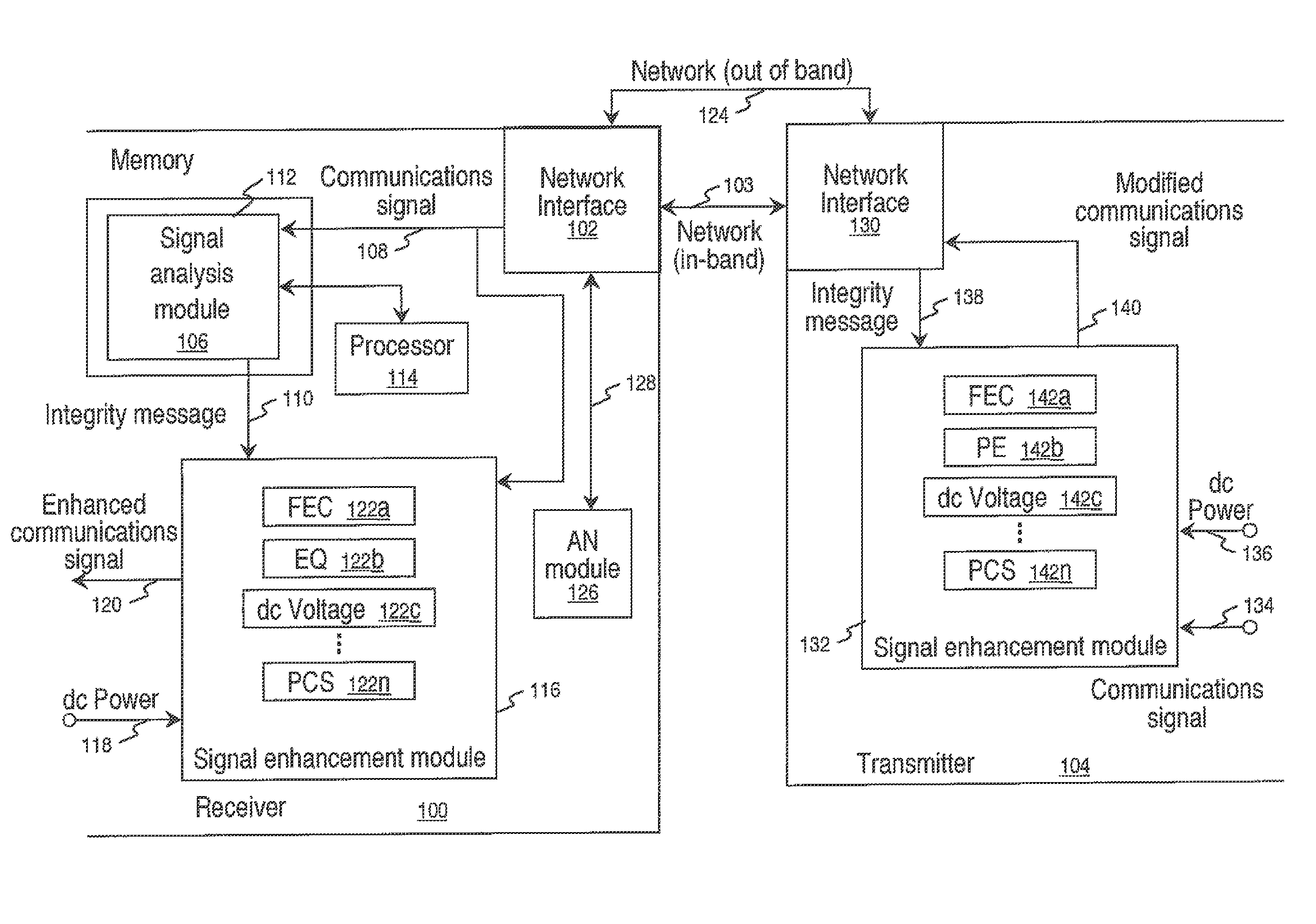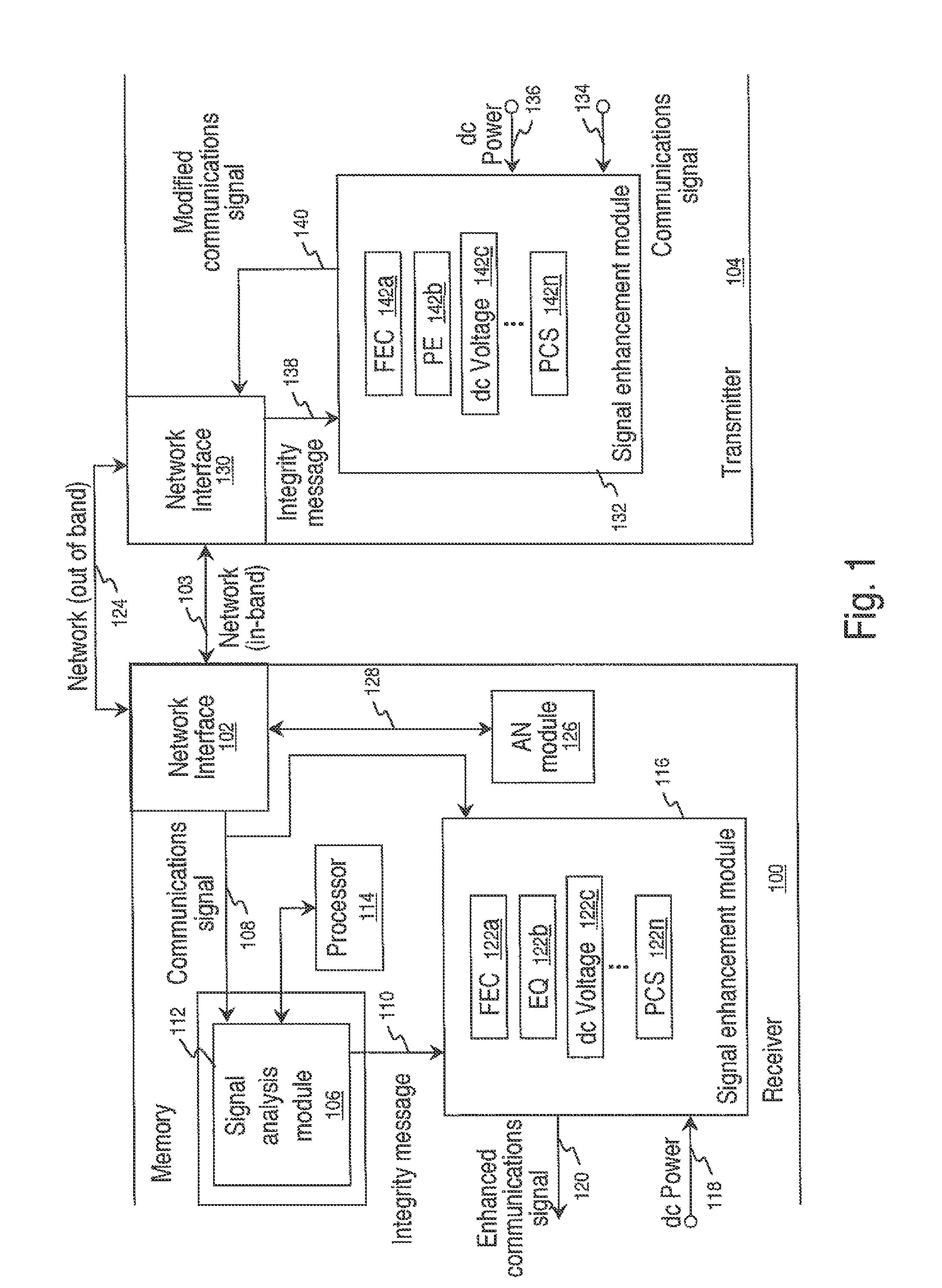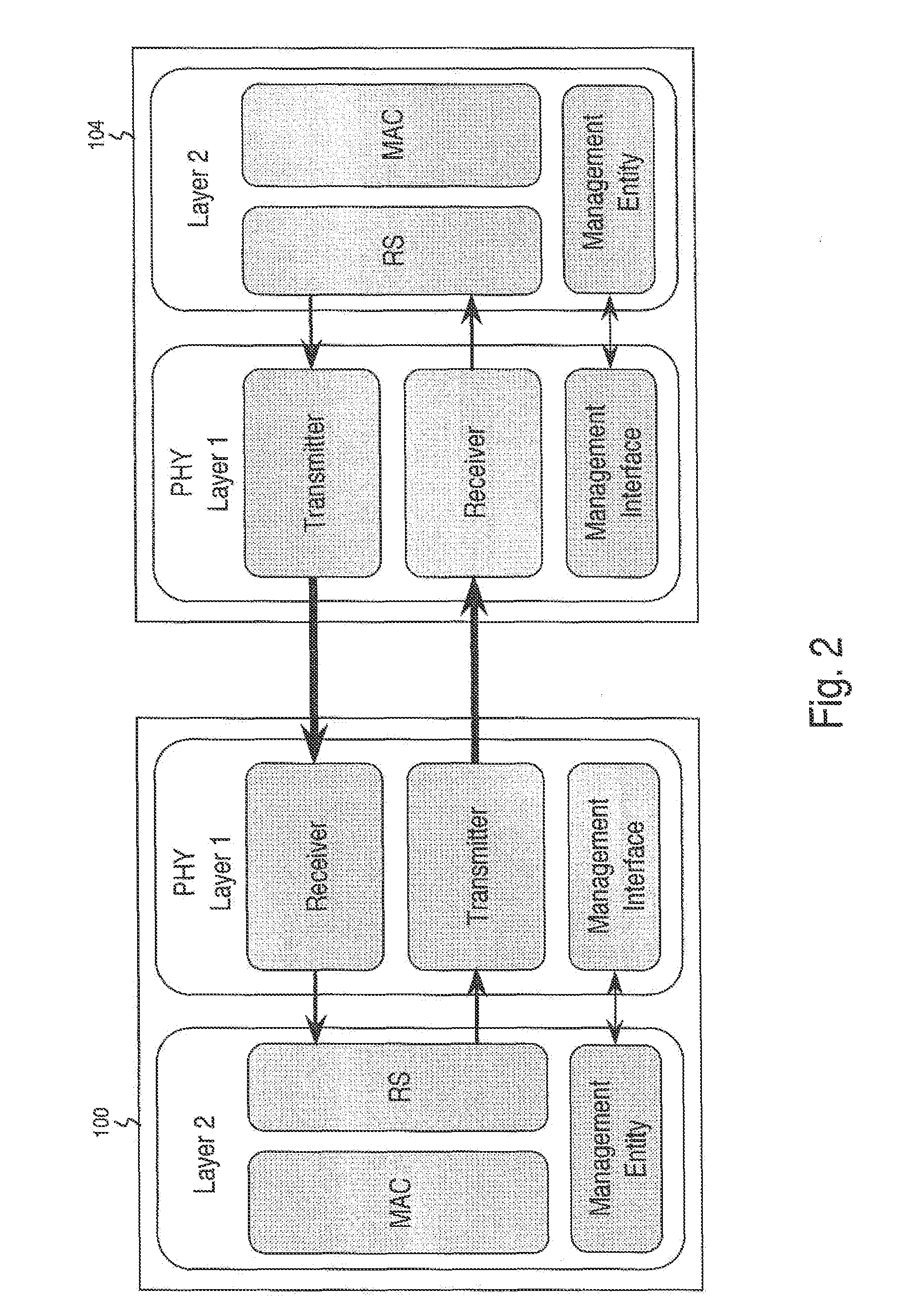System and method for closed-loop optical network power backoff
a closed-loop optical network and power backoff technology, applied in the field of communication systems, can solve the problems of bit errors, relatively high cost of retransmission, and exponentially increasing complexity, and achieve the effect of reducing power consumption and power
- Summary
- Abstract
- Description
- Claims
- Application Information
AI Technical Summary
Benefits of technology
Problems solved by technology
Method used
Image
Examples
Embodiment Construction
[0028]FIG. 1 is a schematic block diagram of a communication device receiver for managing a plurality of signal enhancement mechanisms. The receiver 100 comprises a network interface 102 on line 103 for accepting a communications signal from a transmitter 104. The network 103 may be a Local Area Network (LAN), such as the Ethernet, or an Optical Transport Network (OTN), such as a Synchronous Optical Network (SONET) or in accordance with ITU-T G.709. The receiver is not limited to any particular type of network or protocol.
[0029]A signal analysis module 106 has an input on line 108 to accept the communications signal. The signal analysis module 106 analyzes signal integrity and, in response, supplies an integrity message at an output on line 110. In one aspect as shown, the signal analysis module is enabled as a sequence of software instructions that are stored in a tangible memory 112 and executed by a processor 114. Alternatively, the signal analysis module 106 may be enabled in ha...
PUM
 Login to View More
Login to View More Abstract
Description
Claims
Application Information
 Login to View More
Login to View More - R&D
- Intellectual Property
- Life Sciences
- Materials
- Tech Scout
- Unparalleled Data Quality
- Higher Quality Content
- 60% Fewer Hallucinations
Browse by: Latest US Patents, China's latest patents, Technical Efficacy Thesaurus, Application Domain, Technology Topic, Popular Technical Reports.
© 2025 PatSnap. All rights reserved.Legal|Privacy policy|Modern Slavery Act Transparency Statement|Sitemap|About US| Contact US: help@patsnap.com



